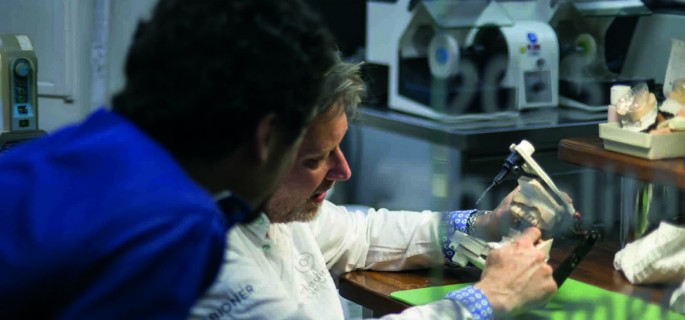The synergy between technology and craftsmanship,Key in making dentures
In 1997, humanity was plunged into a deep disappointment when a computer was able to defeat for the first time a world champion in a chess game.
The outcome of Kasparov vs. Deep Blue highlighted an unbearable reality. On March 12th, this situation was repeated when the software AlphaGo triumphed for the third time over the world’s best player of Go, the ancient game of Chinese origin which is even more complex than chess. A new milestone for artificial intelligence.
The machine showdown versus man foresees a painful truth, that at some point artificial intelligence and technology will surpass the human intellect and craftsmanship, replacing and minimising our intervention and creating a new Industrial Revolution. This statement is often taken as an axiom but is it really true?
There is still a mechanised system in which the craft phase is still lovingly maintained today and protected in many labora-tories. It is key in making dentures dentures.
The lab technician or prosthetic expert models and sizes from a mould obtained from the patient, identifying all the pieces so that they fit the face of the person and, most importantly, they fit perfectly in the mouth so that neither functionality and aesthetics suffer. Hence prosthetists have earned the nickname “master crafts-men”.
But is this manual work replaceable? Definitely. In fact, other dental laboratories and dentists prefer the CAD / CAM technology to the work of the artisan, which consists of the manufacture of prostheses from a computer programme. The accuracy of the machine with respect to human is rather higher, but has drawbacks. Therefore, a lot of dental prosthetic work combines with technology.
Victor Cubillo, medical director and orthodontist for Artedental, defends the work of the technician, arguing that “both the milled tooth structure and each piece can be designed and manufactured by computer, but art is eliminated in its manufacture”.
In his clinic, Artedental combine mechanical work with the artisan. They make each piece with machines of the ultimate generation but use the hands for manual assembly.
The biggest drawback of the CAD / CAM technology,” said Sr. Cubillo, “is that making cosmetic changes afterwards depend on the material used. If the structure is milled zir-conium for example, it is impossible to repair or modify it; and if titanium, it is usual that is too thick to reweld it with guarantees. “He adds: “If in time a correction of the prosthesis is required, you are doomed to repeat the work from scratch, which implies a substantial increase in the cost to the patient, as well as pollution factor which represents the accumulation of such materials.”
Another limitation of the machine concerns the fit, according to the prosthetic director of Artedental, Volker Samrei. Depending on the material used in this procedure, you can generate errors that a computer will not identify and although “making the fit has been made with an exact mould, it must always be interpreted by the eye of the skilled artisan to achieve the best results.
Mr. Samrei adds: “Perfect mathematical processing with a computer are not always appropriate for the patient. Human hand, eye and feelings are critical to achieving the best result, because aesthetics and beauty are hardly detectable to a machine. “
“The computer can provide acceptable results, but never takes into account the patient’s individuality. The result of a sculpture made with a mould can be perfect in its lines but is lacking in character, humanity and that critical eye, despite the maps drawn by a computer.”
“In an industry that inevitably tends to mechanisation, the human character of the technique is and always will be that which gives better results”.
Article published in Tenerife News



